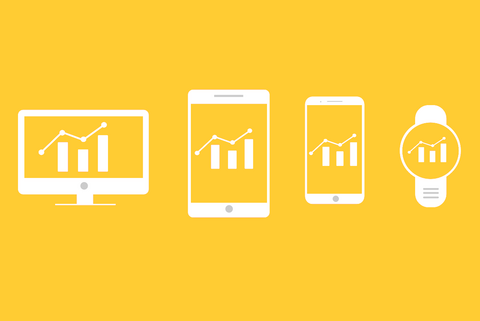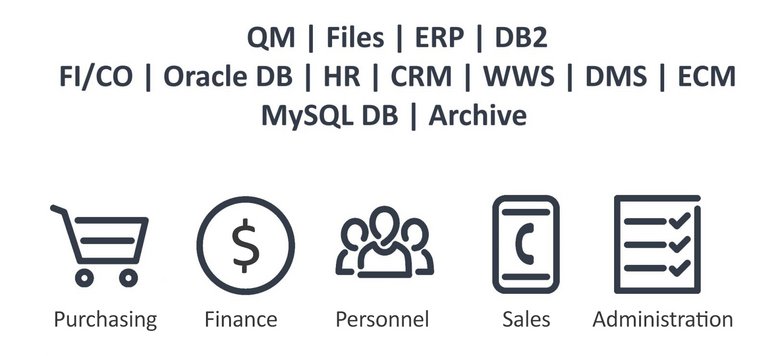
Digitalization: Shaping the platform approach
- Last updated
- Reading time
Why a digital platform brings not only new technology but digital strategy into the company
Digitalization has become the buzzword par excellence. It's hard to imagine media and reporting without this trendy topic, which is why some people have become tired of it. Nevertheless, the opportunities offered by digitalization must not be underestimated.
And more and more providers want to jump on this incredibly fast train. There are plenty of offers for solutions: It seems like everyone has the perfect solution for a certain problem, an application or a specialized service - and it is precisely from this that new difficulties have arisen. Over the years this fast implementation of various solutions has driven IT infrastructure into becoming a rugged, inefficient landscape.

Rugged IT landscapes
The more companies attempted to digitize a certain process in order to increase its digital efficiency or find that one solution that may solve a certain problem by "adjusting" it via custom programming to suit their requirements, the more transparency and, ultimately, company-wide efficiency suffered. Also, these solutions and dashboards then had to be managed, employees had to be trained in various tools and onboarded, and comprehensive communication difficulties has to be bridged. If you take a look at the current media noise today, the answer to all these problems seems to be clear: A platform is needed!
Solutions become platforms
The platform approach promises to reduce the complexity of the IT landscape, establish processes throughout the company in digital form, and establish greater transparency and traceability. And this is precisely why many providers are positioning themselves as just that these days - a platform solution. It becomes problematic when the new trend continues to hide the same one-trick ponies or systems that were previously used in the company as management solutions, now having added some new functions. In that case, it can happen that the new platform does not provide the desired increase in efficiency, is not open enough or has sufficient interfaces to other systems, and therefore cannot map processes completely digitally.
Therefore, there is a growing gap between the suggested digitization approach and the actual performance.
The platform-promise
So what is a real platform and how can it help the company develop its digitization strategy? While Forrester Research defines a digital platform as a set of services or capabilities delivered through APIs, tech blogger Jonathan Clarks defines the functionality in more detail:
Platforms are structures that allow multiple products to be built within the same technical framework. Companies invest in platforms in the hope that future products can be developed faster and cheaper, than if they built them stand-alone. Today it is much more important to think of a platform as a business framework. By this I mean a framework that allows multiple business models to be built and supported.
Thus, according to Forbes the distinction between a product or tool and a platform can be seen therein:
Software products (i.e. applications) come with predefined business logic that narrows their ultimate breadth of scope. Conversely then, platforms separate out the logic functions of applications so that an IT structure can be built for change. (…) then a firm’s application platform can be doing something markedly different five years after it was firm laid down.
It is only through this interaction that new opportunities arise for companies to convert unused potential into digital added value, such as:
- data, documents and processes are networked
- users receive exactly the information they need for decision making
- processes run seamlessly throughout the company
- risks of system breakdowns are reduced
- complexity in everyday work is reduced
- investments are permanently protected
- data exchange between systems, users and departments is facilitated
Conclusion: Platforms expand business potential
Thanks to their open and integrative design, platforms make it possible to get the most efficiency out of business processes. Existing systems are better networked and leave room for the integration of new systems. Interfaces and effective change management help to achieve this. Starting from platforms that have a powerful workflow basis, the potentials of the corporate infrastructure can be expanded even more future-oriented and step by step: But beware! Not every platform is equally suitable for the corporate goals. Therefore, when choosing the right platform, care should be taken to ensure that your own requirements for possible process scenarios correspond to the effort required for implementation.
Otherwise it can happen that digitization projects become confusing, take up a lot of time and resources and take a very long time until completion. Last but not least, the users and process designers of a digitization platform should be empowered to work with the solution themselves. This reduces the costs for rapid changes, maintenance or new project implementations. Each unit can take responsibility for its processes and thus gain more flexibility and transparency.